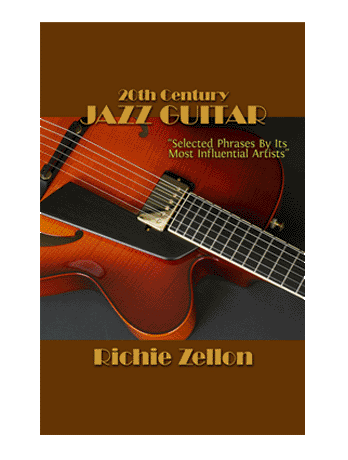EZ 9th Chord Arpeggio Trick
Transcribed from video:
In this lesson I want to show you an easy trick that will instantly make your solos sound jazzier. And no this isn’t click bait…jazz improvisation is not easy to learn, but if you are putting in the time and learning the basics, the simple procedure I’m about to show you is bound to speed up your progress.
EZ 9th Chord Arpeggio Trick
If you are just getting started with jazz guitar, hopefully you have learned that the arpeggio is the backbone or foundation of every good solo. If you are not yet aware of this, at the end of this lesson, please be sure to watch my video “Stop Thinking in Scales”.
Getting back to the subject at hand, if you are a jazz newbie, when you start improvising playing an arpeggio or scale, you probably have the tendency to start on the root of each chord change. This of course is the result of practicing those arpeggios always starting on the root. However, playing the root at the beginning of every chord change sounds redundant! Why? Simply because it is the role of the bass player.
Furthermore, the root doesn’t imply the changes. On the other hand, if you start each change with a 3rd, 7th or upper extension, this will blend with the bass players root and portray the characteristic color of the new chord. Even if there is no bass player, the harmony will be better implied. So having said this, one way you can break this beginners habit of always reverting to the root, is by simply playing the 9th instead.
Don’t know what or where the 9th is? Well here’s why it’s so easy and effective. The 9th is simply the 2nd note in a scale when added to a chord. This is known as an upper extension. And let me add that it is usually customary to get rid of the root when playing a 9th arpeggio. This can be done for different chord families. Let me show you how I would do it on a basic major 7th chord arpeggio.

Here is the same arpeggio replacing the root for the 9th:

Did you know that you can make a solo sound pretty decent by just playing 9th arpeggios over each chord and making them swing? Initially you don’t even need to play any fancy chromatic approach notes. So with that in mind, I want to show you a couple of II-V-I 9th arpeggio based lines that you can use over major and minor keys. Nonetheless, first I want you to hear the effect of purely resorting to 9th arpeggios over a chord progression. To do so, next I am going to improvise and purposely refrain from playing anything that is not part of the 9th arpeggio over each chord change. Listen… (see video )
So there I was playing over the initial changes to Satin Doll. I agree it’s not hard core bebop or anything sophisticated because I was simply going up and down a 9th arpeggio. But the bottom line is that it sounds a lot better and jazzier than if you were to do the same employing the root. So having said that, let me show you the first II-V-I comprised of 9th arpeggio notes:
Here’s the same line substituting all the roots for 9’s:

Here is a line over a II-7-V7b9-Im7 first using roots in each measure:

Here’s the same line substituting all the roots for 9’s:

Before concluding, if you want to further experiment with this concept, take any jazz line that includes the root and doesn’t have the 9th in it, and try exchanging it for the 9th. You’ll be amazed as to some of the variations that you’ll come up with!
PDF DOWNLOAD:
The 9th Arpeggio Lesson PDF is only available for Elite Members
Note that you must be logged in for the download link to be visible!
[Content protected for Elite, Elite 3 Month, Elite 6 Month members only]
2 Comments
Submit a Comment
You must be logged in to post a comment.


Thanks Richie,
EZ (th chord arpeggio trick: “Easy trick” it may be, but it is also insightful, effective and immediately enjoyable!
Fantastic. Just what I was looking for. Thank you.